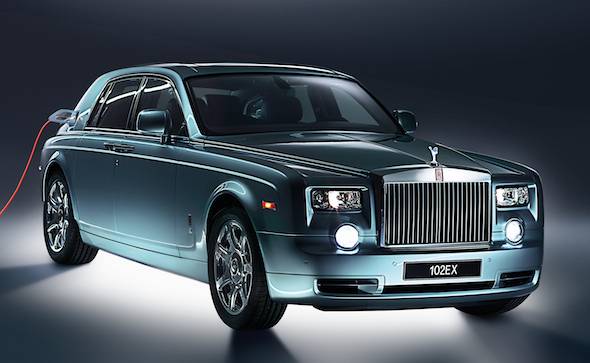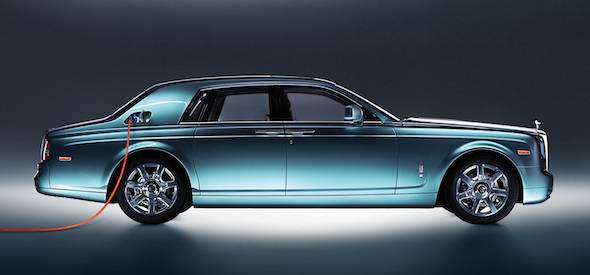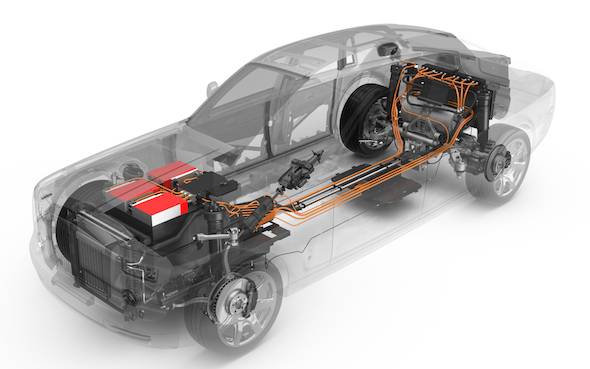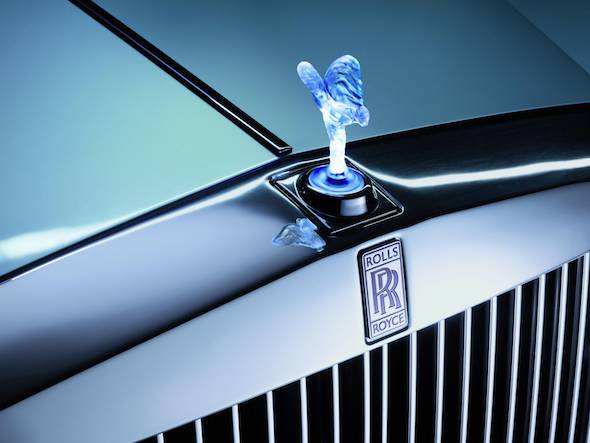“They are perfectly noiseless and clean. There is no smell or vibration and they should become very useful for town use when fixed charging stations can be arranged.”
If you think this is just another hollow assurance from a well paid pr rep for one of today’s many electric vehicle developers, be prepared to do a double take. These words were actually uttered almost 100 years ago by Charles Rolls in an interview with Automobile Journal. Though he’s not the kind of guy whose name carries instant recognition, you’ve probably heard of a little car company he co-founded called Rolls-Royce.
The venerable British manufacturer dusted off the quote recently to demonstrate their history as pioneering dabblers in the field of electric car research, despite their reputation for huge gas guzzling luxury automobiles. The occasion? The presentation of a new research concept called the Phantom Experimental Electric, a.k.a. 102EX.
Seeking to determine the potential market for an electric Rolls, the storied luxury carmaker has essentially retrofitted their flagship model with an electric powertrain and a few minor interior adjustments to result in a fully functioning electric Phantom, albeit one they refuse to label a concept car. Though insisting that 102EX will not be put into production, Rolls is instead labeling the car a “test bed,” as it will be presented over the coming year for firsthand tests by owners, VIPs, and the media. Rolls’ hope, of course, is to determine whether development of a full-fledged electric model would be an investment worthy of high returns.
Claiming to be the world’s first battery-only electric vehicle for the ultra-luxury segment, the Phantom Experimental Electric utilizes a frontally located battery pack that weighs a whopping 1,410 lbs, purportedly the largest passenger car battery in the world. The lithium-ion unit distributes power to two electric motors, which have been installed in the rear-located gas tank compartment to retain the Phantom’s desirable 50/50 weight balance. In addition to preserving optimum handling, this layout ensures that the Phantom’s comfortably proportioned cabin is not compromised by any technological considerations.
Offering several different charging options, the battery can be recharged in as little as eight hours with a three-phase charger, or 20 hours with a more conventional single phase configuration. As with any new electric vehicle, the big question revolves around range, which in the case of 102EX is estimated to be as much as 124 miles. Though by no means a game changing number, a 124-mile electric-only range would seem to be competitive for such a heavy car, especially considering that 200 miles is generally regarded as the current benchmark for excellence in a daily electric driver, which 102EX is certainly not. It also towers above the meager electric-only range of supposed electric commuter cars like Chevy’s Volt (which really only delivers 26 miles or so of electric-only driving, despite all the hype).
Performance-wise, 102EX’s electric motors collectively develop almost 389 horsepower and 590 lb-ft of torque. While the overall power is slightly down from the standard Phantom’s 6.75 liter V-12 (453 hp), the torque figure is actually higher, likely a dividend of the car’s single speed transmission. Top speed is electronically limited to 99 mph, while 60 mph from standstill can be reached in less than 8 seconds, figures both expectedly less dazzling than the original V-12 equipped Phantom.
Strangely, despite Rolls-Royce’s historical musing about their track record of electric vehicle development, the power system for 102EX was actually developed and installed by a third party company, a fact that is oddly absent from their publicity materials on the car. Has Tesla Motors struck yet another deal with a major player, in addition to their powertrain development for Daimler-Benz and Toyota? Guess again. The silent partner (pun intended) in this case is Lotus, whose participation seriously ups the credibility of promises of electric powertrains in some of their own future models. Lotus’s involvement is also somewhat ironic considering that one of their lightest cars, the track-intended Exige S 260 Sport, weighs in at 2,000 lbs, only 600 lbs heavier than 102EX’s gargantuan battery pack. That’s right, the entire sport-tuned Exige weighs only 600 lbs more than the new Rolls’ battery.

























